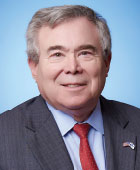Poor Access to Care Is More Than a Problem—It’s a Tragedy

Psychiatric disorders affect about 45 million people in our country on an annual basis. While women have a higher prevalence than men, it is our young adults who have the highest prevalence at 22%. We know that most psychiatric disorders have their onset in late adolescence and early adulthood. If substance use disorders are included, then up to 28% of youth have a diagnosable mental illness. Although many of these conditions may be mild to moderate, that percentage is in stark contrast to common medical disorders such as asthma, which affects 8% of young adults and type 1 diabetes at 0.3%.
Psychiatric disorders are the leading cause of disability in the United States. Young adults in the prime of life bear this burden well in excess of the general population, and their futures will be most impacted. As we age, cardiovascular and musculoskeletal disorders become more prevalent, but not until the seventh decade of life do they begin to surpass psychiatric disorders as a cause of disability. The difficulty of accessing psychiatric care and fears about stigma and discrimination combine to prevent young people from getting the treatment that might alter their destiny in life.
I’ve had patients who as young people chose not to attend college because of an anxiety disorder or decided to drop out because of a panic disorder that began once they were away at school. Young people should never have to face such a choice. Even when an individual is open to treatment, I have experienced major problems trying to find a referral in a college town or through a college health service to a psychiatrist. The more rural the location, the more impossible it seems. College mental health programs are vital for students who come to college with a mental illness or go on to develop mental health issues, but too often these programs are undermedicalized, sometimes because of their treatment philosophy but more often because of the absence of a psychiatric workforce in the community. Insufficient resources to support college mental health programs are often an element as well. The Affordable Care Act allows young people to remain on their parents’ insurance until age 26. Despite this, the multiplicity of insurance plans and the restrictions imposed by insurance companies on provider networks unfortunately prevent many students from being able to pay for treatment even if it is available.
The majority of people with substance use disorders go untreated as well, and these disorders account for 11% of disability in this country. Tragically, in 2017 overdoses claimed the lives of over 72,000 Americans, many of them young. Overdose deaths did not suddenly spring upon us out of the blue. There was a year-over-year increase in overdose deaths beginning in the late 1990s. It was the occurrence of overdoses in middle- and upper-class communities that finally got the attention of politicians and the public. Effective new policies and prescription drug monitoring programs may have finally helped us turn the corner, but prevention and limiting the availability of opiates are only two aspects of addressing this problem.
Other elements needed to effectively address the mental health and substance use problems in our young people are equitable access to treatment programs and the availability of all effective modalities to fight these illnesses. Finding a psychiatrist is just the first step. Given the shortage in our workforce, we need clinicians who can provide comprehensive care to patients with mental and substance use disorders and will prescribe medication-assisted treatment if needed, as well as address the psychological dimensions for anyone seeking treatment.
I’ve mentioned only some of the tragic aspects that the lack of access to treatment causes for our youth. I plan to discuss much more of what I view are critical dimensions of this issue as well as possible solutions within our power to provide in subsequent columns. Stay tuned. ■



